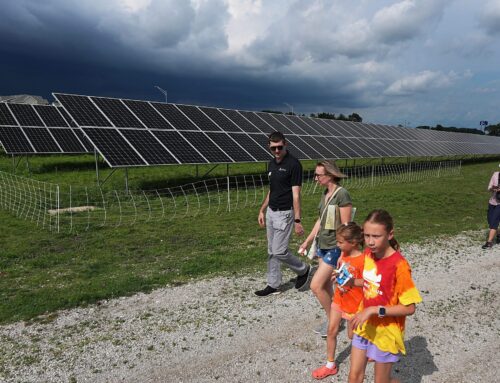Lazard Releases Its Levelized Cost Report with the Same Misrepresentations
June 23, 2025
Lazard Inc. recently released its 18th edition of its Levelized Cost of Energy report which provides the cost of building and operating various generation technologies. It finds that utility-scale solar and onshore wind remain the most cost-effective forms of new-build electricity generation on an unsubsidized basis (i.e., without tax subsidies) and indicates that this trend is expected to persist over the next 10 years. One needs to question the result since more wind and solar plants have been built over the last 10 years than any other technology, and yet residential electricity prices have increased 32% over that time period. They increased by 25% during the Biden years alone. This increase occurred because solar and wind are intermittent, weather-driven technologies that must be backed up by traditional technologies or very expensive batteries that get charged when generation exceeds demand. Thus, wind and solar power require duplicative sources for backup, resulting in consumers paying twice.
According to the U.S. Solar Market Insight 2024 Year in Review report, released by the Solar Energy Industries Association and Wood Mackenzie, solar and storage accounted for 84% of all new electric generating capacity added to the grid last year. The United States installed 50 gigawatts of new solar capacity in 2024 — more new capacity than any energy technology in over two decades. Utility-scale solar increased by 33% in 2024 with a record of 41.4 gigawatts of installed capacity. The reader, however, should be aware that solar attains less than a 25% capacity factor, which means that for the same capacity as a natural combined cycle plant, it only produces about a quarter of the energy.
When the sun does not shine, other conventional generators are called to fill in the gap because consumers expect electricity to be supplied when they demand it. Solar power is not charged for the backup power in the levelized cost calculation. Utility customers, however, must pay for that backup power in their electricity bills. Politicians and the public are made to believe that the cost of solar and wind is the most economical of the current slate of generating technologies because the backup charges are not assessed to them.
In Texas, the state with the most renewable energy, the Legislature was considering several bills that “clean energy companies” called “industry killers,” but those bills failed to pass. One of the failed bills, Texas Senate Bill 715, would have required wind and solar facilities to contract with power plants or battery operators capable of supplying backup power when the sun is not shining or the wind is not blowing, which would have helped stabilize power supply and reduce costs that arise from price volatility. Two other bills that would have placed additional fees, regulations, and permitting requirements on renewable energy also failed to pass.
Solar power was able to capture lucrative federal tax credits last year that resulted in those massive additions due to President Biden’s Inflation Reduction Act (IRA), which was passed solely by Democrats. While the Congressional Budget Office estimated the cost of those subsidies at $369 billion, others have estimated them to cost taxpayers over $1 trillion because the subsidies are essentially uncapped in the IRA. Those credits, however, may be in jeopardy as President Trump’s “big, beautiful bill” is being debated in Congress, and the House version of the bill has effectively killed them.
As a result, solar developers are either delaying or cancelling their projects until the uncertainty is clarified. In Texas, in the past two months, four gigawatts of battery storage systems and 3.5 gigawatts of solar farms were either deemed inactive or canceled, according to a recent analysis of Electric Reliability Council of Texas data. Renewable developers are awaiting the result of Trump’s tariffs, which increased module prices, and the “big, beautiful bill” before entering construction. If Lazard’s levelized cost numbers, indicating that these plants are economic even without subsidies, were the reality, one would think that the developers would continue with their projects.
Onshore wind power is in the same situation as solar power in that when the wind does not blow, backup power is needed. According to the Energy Information Administration (EIA), onshore wind has capacity factors that average less than 35%. Despite their volatility, taxpayers pay for lucrative tax credits given to wind from the IRA, and utility consumers pay for the needed backup power or expensive batteries in their utility bills.
Background
The EIA defines levelized cost as “the present value of the total cost of building and operating a generating plant over its economic life, converted to equal annual payments.” In its model documentation report for the Electric Power Module, the EIA provides the overnight capital cost for natural gas combined cycle as $824 per kilowatt (in 2024 dollars), solar PV’s capital cost as $1379 per kilowatt (67% higher than gas combined cycle), and onshore wind’s capital cost as $1626 per kilowatt (97% higher than gas combined cycle). Even with lower capital cost estimates, both the EIA and Lazard calculate that the levelized cost of natural gas combined cycle is higher than that of wind and solar power when these sources are subsidized by federal tax credits under the IRA. The EIA, however, finds that in some regions, the levelized cost of solar power is higher than that of natural gas combined cycle when subsidies are removed.
The EIA rightly points out that the levelized cost of electricity is limited because it only reflects the cost to build and operate a plant, not the value of the plant to the grid. The EIA uses the avoided cost of electricity, a measure that provides the value of the plant serving the electric grid, to address the issue. The agency finds that the avoided cost of electricity for resource-constrained technologies is generally lower because of their lower contribution to energy, capacity, and spinning reserve in the grid, which is precisely what makes the grid more unstable and caused the blackout in Spain in April.
Conclusion
In its most recent levelized cost calculation, Lazard finds that wind and solar power are the least expensive generating technologies, even on an unsubsidized basis, that is, even when the tax credits in the IRA are not assumed as part of the calculation. That result is questionable for several reasons. First, wind and solar power are intermittent, weather-driven technologies that can only generate electricity when the when is blowing and the sun is shining, which means that other technologies must provide the power to fill any gaps in meeting demand. The cost of the backup power, whether it is from a coal or natural gas unit or from an expensive battery, is not considered as part of the levelized cost calculation. Yet, consumers must pay it, which is one of the reasons that residential electricity prices increased 25% during the Biden administration. Second, if those technologies are economic without subsidies, why are solar developers delaying or canceling projects until Congress finishes debating Trump’s “big, beautiful bill” and Trump’s tariffs are resolved?
Search
RECENT PRESS RELEASES
Related Post




